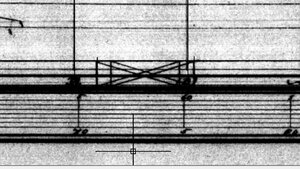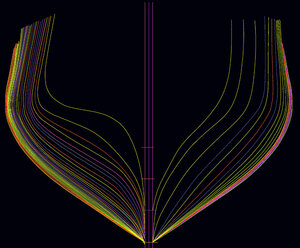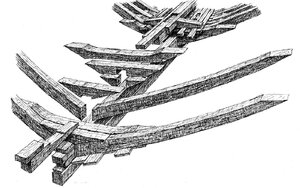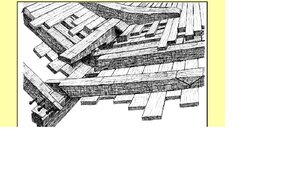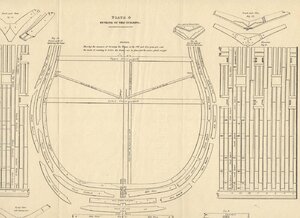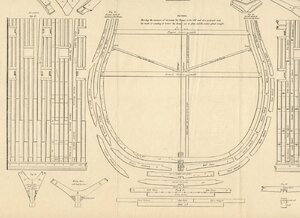Hi Davef. I like to tune in here with you with some thoughts with you permission to come aboard. Forgive me if you seen and know most of this, just seeing what help's you and what doesn't. The x that you show on the keel I believe is the scarph joint of the keel being shifted to a better place because my understanding is the station lines were also the joints line of the bends and shifting it because of the joint of the bend more then any thing else. The scarfs of the keel, depending on her rate went from 5 feet to 3 feet 2 inches. If you could measure from the beginning of one x to the end of that x and see what you come up with if you don't mind good sir. As far as the lay out of the frames am more inclined to go with bend's and filler and the only place to have three frames put together was as you said the shifting of the floors at the dead flat. Goodwin in his book The Sailing man of War talks about the old framing to the new framing going from 1650 - 1710, to 1750-1811 to the Seppings method of 1811 to 1850. In The biggest item that I can find that may of changed her framing was when they stop using chocks and scarf's and went to just butting the pieces together making building the frames faster, and less costly. One thing from looking at the growth of what they did it seems that they kept that same system of framing but went to butts. There are more things that change how the framing change but with out reading more its hard to say. Was this true for every ship they built, probably not and each master shipwright build them his way. Being he was a English ship wight I would think he built them has he was taught in England. Another is the gun ports. When the framed out the gun ports the bends made up the side of the ports and had strict commands not to cut in to the bends or (double frames) put together as one. Another item that I read about was wooden hanging knees and believe the reason they stop using them was because they ran out of wooden one which some what forced them to go to iron knees. Much like the merchants who was already using them so they could carry more cargo. The English navy was a little slow on changes and was slightly behind the merchants way of doing things. I do believe that the French already were using iron knees in their vessels from early on. If he didn't use them it may of been because he went using iron ones. I uploaded a plate from John Fincham who was a Master ship wright and was teaching at the Royal Naval College at Portsmouth England between 1812 to 1830 which fit's the time line of when Psyche was being built and what they was and was not doing. Hope this helps and if I put things you already know forgive me for that Gary
View attachment 174220View attachment 174221
Gary you and everyone associated with shipbuilding is welcome to comment. The thing is I get fixated on one thing and don't see the whole.
I did think about the scarf idea but what I didn't show are more x's fore and aft. As you saay they could be scarfs but where they are placed would weaken the ship.
I am aware of goodwin's books and have they ALWAYS handy. The only thing that he didn't rake into consideration is where the ship was built.
In North America 1750's approx. to early 1800's. British built their ships with the aid of French craftsmen. To say the least let's look at the Ontario. Built by a british shipwright, but instead of single framing he employed double framing, spaced apart, not close together. Plans of Ontario reflect that.
So its safe to say conditions, available material, determine how the ship will be built. Sepping's although in the time era, would probably not had any influence in North America.
Posts by Dave Stevens, in the past, have definitely made it clear that alternative construction methods where used in North America.
When I looked at reports written by Strickland after 1820, on the condition of the ships in Ordinary, He never mentioned iron knees etc. The only thing he comments on were lodging knees and rot.
It is important that the framing runs up the sides of the ports. But it is also evident that some doubles would be split, in other words half of the double would rest under the port while the next frame would travel up the side of the port.
Again I have the books by John Finchman, but he is not really relevant here.
Keep throwing those ideas out I may have missed something

